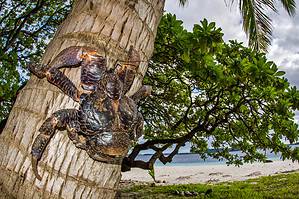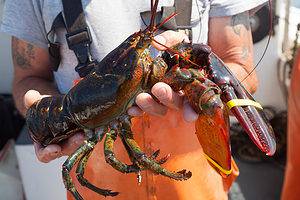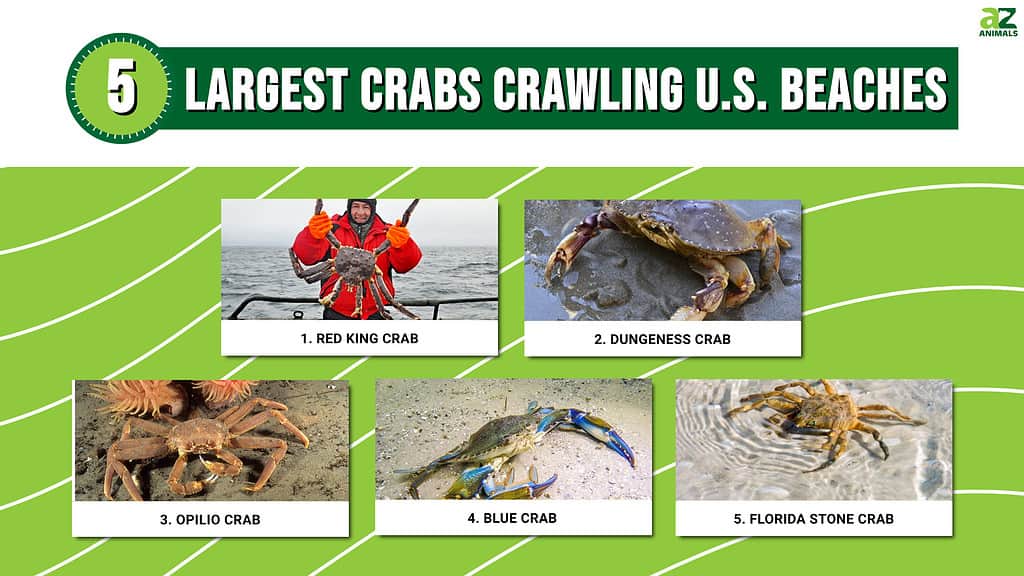
The types of crabs you typically see at the beach may be small hermit crabs or other smaller species, but people in some areas are lucky enough to have regular encounters with the largest crabs in the U.S. How do you find crabs? Check tide pools, under logs, seaweed, and rocks during low tide. You can also look for “V” formations in the sand, which could be crab tracks.
How do we determine the largest crabs? Scientists measure the carapace, which is the upper section of the exoskeleton, to compare species sizes. In most crab species, female crabs are larger than male crabs.
Here are some of the largest crabs you might find on a beach in the United States.
5. Florida Stone Crab

Florida stone crabs can regrow their claws, which are considered a delicacy.
©Ami Parikh/Shutterstock.com
Despite being called the Florida stone crab, this crustacean’s habitat actually stretches from the Atlantic coast of Connecticut to Colombia in South America. They are closely related to the Gulf stone crab, and the two species can breed with each other. Both species are important for commercial fishing.
These crabs have amazing healing abilities. Their limbs and claws can break off easily to escape a predator and then grow back. The crabs also molt only at night, because they are too vulnerable to predators without their shells. So, they have a special hormone that prevents the crab from molting in an unsafe environment.
Because of their unique healing powers, some people who catch stone crabs harvest only the claw and then throw the rest of the crab back so it can grow a new one. Others catch and sell full crabs. This species is considered to have a stable population despite growing haul volume because of regular and healthy spawning.
The width of the carapace of the Florida stone crab is between 5 and 6.5 inches. A large Florida stone crab may weigh as little as five ounces.
4. Blue Crab
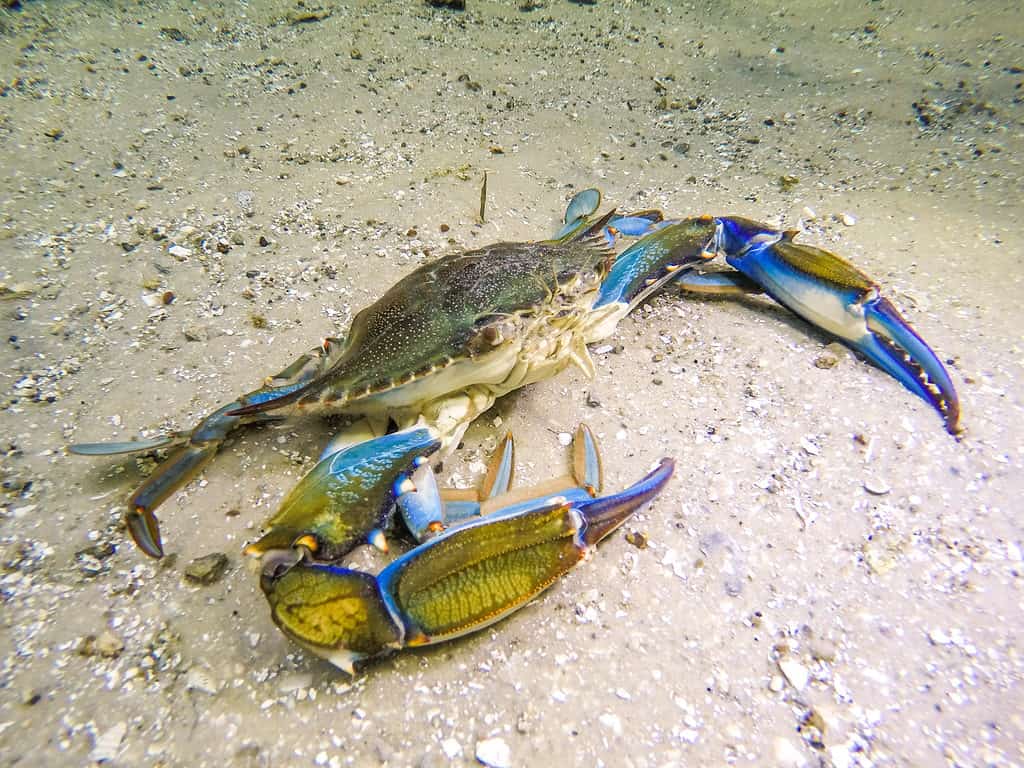
Experts predict that blue crabs will thrive as their habitat expands due to climate change.
©Jen Helton/Shutterstock.com
Blue crabs are also called Atlantic blue crabs or Chesapeake blue crabs. They are found on the East coast of North and South America ranging from Cape Cod all the way to Argentina.
This type of crab is a delicacy. It is the official crustacean of the state of Maryland. The Chesapeake Bay in Maryland is well known for crab dishes including crab cakes, steamed crabs, and crab hot pots.
It is easy to tell the males and females of this species apart. The females have an underbelly apron that is shaped like the US Capitol Building, while males have one that is shaped like the Washington Monument.
While other types of crab may be negatively affected by climate change, experts believe that the blue crab will thrive. This may still be bad news as it can disrupt other ecosystems as their habitat grows. Blue crabs were recently found further north than their typical range, in the Gulf of Maine.
The carapace of the blue crab can be as large as 9 inches wide. They can weigh up to 1 pound, but typically weigh a third of a pound.
3. Opilio Crab
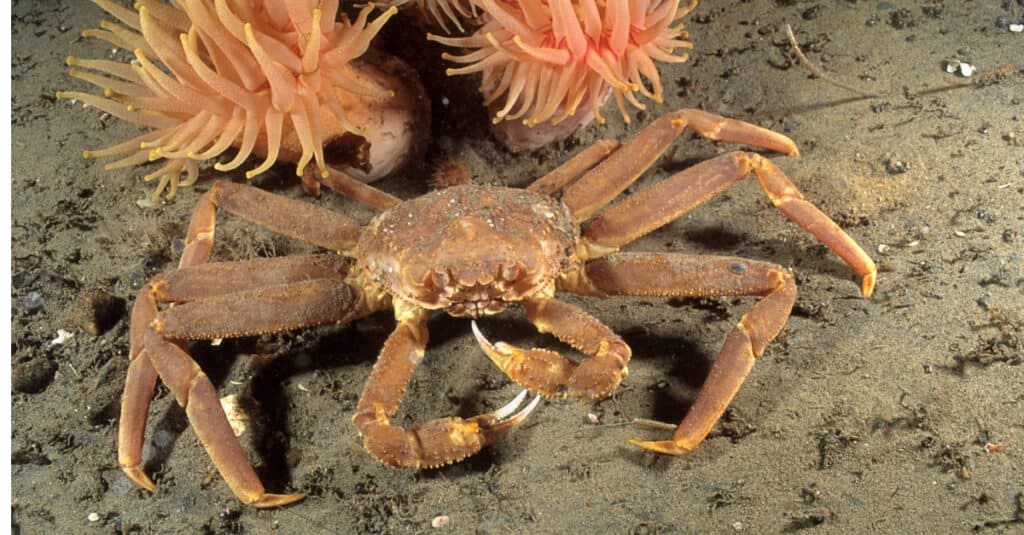
These crabs have long legs that make them appear larger than their relatively average-sized carapace.
©RLS Photo/Shutterstock.com
Opilio crab is also called opies, or by its scientific name Chionoecetes opilio. It is a species of snow crab. You will not find this crab on any US beaches outside of Alaska. With this species, males actually grow larger than females.
Recently, the Alaska Department of Fish and Game banned commercial fishing for snow crabs in the 2022-2023 season because of a stunning decline in population. In 2018 the population of snow crabs in the area was 8 billion. In 2021, it was just 1 billion. They list the reasons as overfishing and loss of habitat due to an oceanic heat wave that most scientists agree is related to climate change. This has had a devastating effect on the fishing industry in Alaska and experts say it could take 6-10 years for the snow crab population to recover.
The carapace of the opilio crab can be up to 6.5 inches wide. However, they also have long legs that make their size appear even more impressive. They weigh up to three pounds.
2. Dungeness Crab
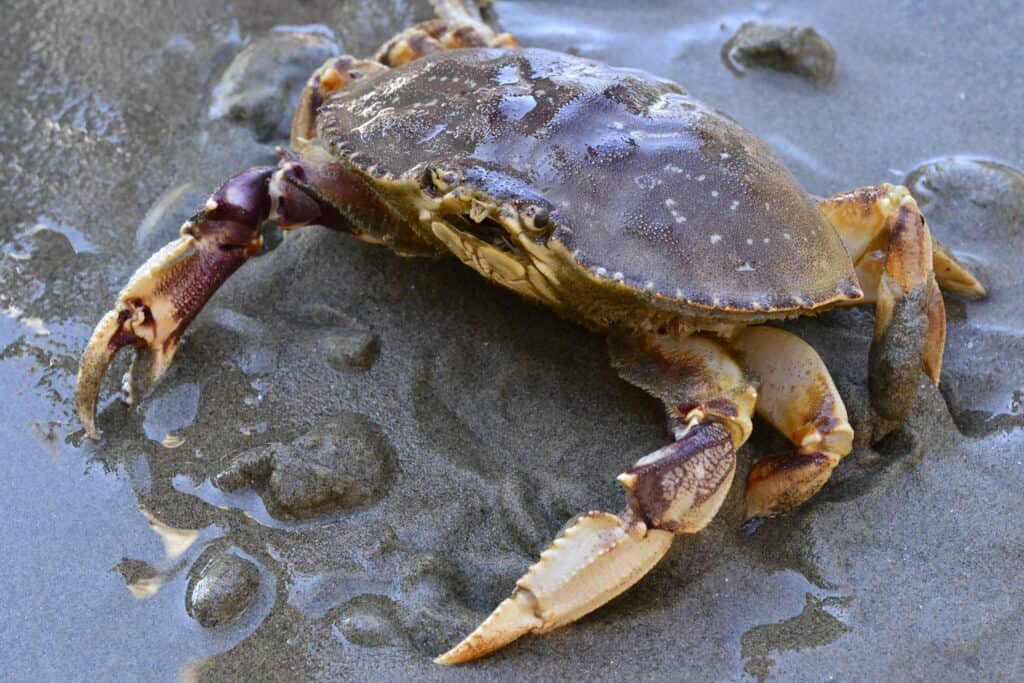
Dungeness crabs are a delicacy on the west coast of the U.S.
©Jennifer Nicole Buchanan/Shutterstock.com
These large crabs are found along the west coast of the United States from Alaska to Santa Barbara, California. It is the most commercially important crab in Washington State, and it gets its name from a town of the same name in the state. There is an annual festival to celebrate the species in Port Angeles, Washington. It is also the official state crustacean of Oregon.
Dungeness crabs have a unique survival technique to use when threatened by predators. They can fully bury themselves in the sand.
Dungeness crabs can have a carapace with a width of up to ten inches. They weigh up to 4.5 pounds.
1. Red King Crab
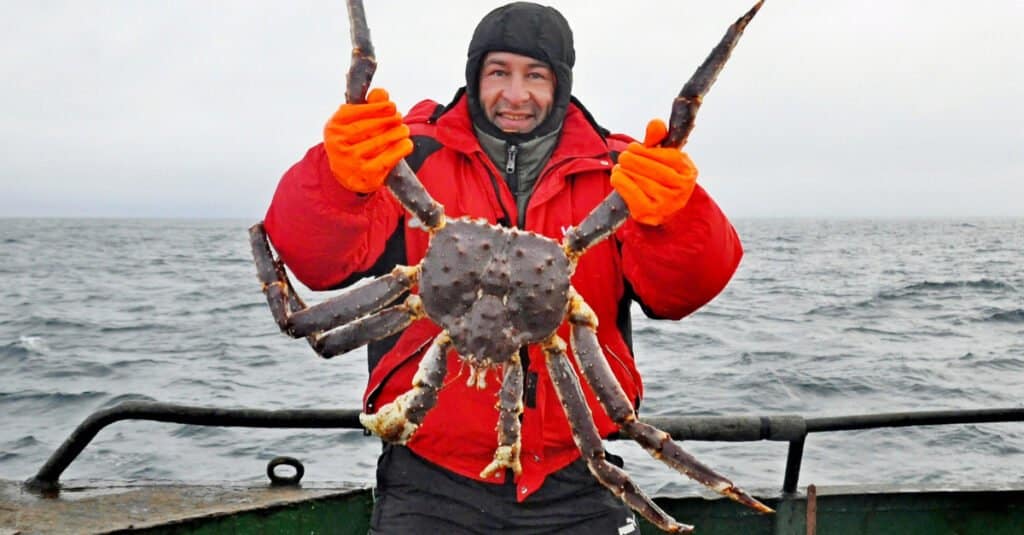
Red king crabs, which turn red after cooking, are the largest crabs in the United States.
©Don Serhio/Shutterstock.com
The red king crab is likely the largest species of crab in the United States. Like the opilio crab, you will only find it in Alaska in the US. It is also present around the Russian Kamchatka Peninsula. This type of crab is incredibly important for commercial fishing despite the fact that it is pretty difficult to catch.
This type of crab has also been experiencing a severe population decline. The Alaska Department of Fish and Game also banned fishing of one type of red king crab – the Bristol Bay red king crab for the 2022-2023 season. Between this ban and the ban on snow crabs in Alaska, experts estimate the direct loss from the ’22-’23 season to be over $287 million, with other losses to local communities that will miss out on a large percentage of tax money that is related to the crabbing industry.
Red king crab carapace can grow up to 11 inches wide. Their legs can span nearly six feet, and they can weigh up to 28 pounds.
Summary of the 5 Largest Crabs in the US
| Rank | Crab | Width of Carapace | Weight | Location |
|---|---|---|---|---|
| 1 | Red King Crab | 11″ | 28 lbs. | Alaska |
| 2 | Dungeness Crab | 10″ | 4.5 lbs. | West Coast: Alaska to Santa Barbara, CA |
| 3 | Opilio Crab | 6.5″ | 3 lbs. | Alaska |
| 4 | Blue Crab | 9″ | 1 lb. or less | East Coast: Cape Cod to Argentina |
| 5 | Florida Stone Crab | 5″-6.5″ | 5 oz. | East Coast: Connecticut to Colombia |
The photo featured at the top of this post is © P. Dorman/Shutterstock.com
Thank you for reading! Have some feedback for us? Contact the AZ Animals editorial team.




